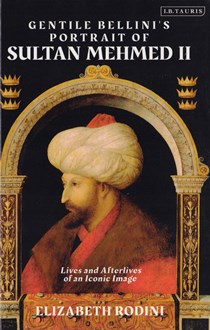Gentile Bellini's portrait of Sultan Mehmed II : lives and afterlives of an iconic image / Elizabeth Rodini.
Yer Numarası
A.IX/5014
ISBN
9781838604813 (HB)
9780755616619 (PB)
9781838604820 (ePDF)
9781838604844 (eBook)
9780755616619 (PB)
9781838604820 (ePDF)
9781838604844 (eBook)
Dil Kodu
İngilizce
Yazar
Basım Bildirimi
First published [1. baskı].
Yayın Bilgisi
London : I. B. Tauris, 2020.
Fiziksel Niteleme
xiv, 207 sayfa, [8] sayfa resim (renkli), minyatür (renkli), portre (renkli) : resim (kimi renkli), minyatür (kimi renkli), portre (kimi renkli), çizim, harita, tıpkıbasım ; 24 cm
Genel Not
İndeks s. [203]-207.
Bibliyografi, vb. Notu
Bibliyografik notlar s. [151]-185.
Bibliyografya s. [187]-201.
Bibliyografya s. [187]-201.
İçindekiler Notu
Pursuing a portrait: subject, object, method -- In circulation: courtly exchange and the discourse of objects -- Encounters: artist, subject, audiences, and the matter of truth in painting -- History, memory, and the trails from Istanbul to Venice -- Self and other: excavating the orientalist imagination -- Constructing authenticity: restoration, provenance, and reproduction -- To London? Emerging debates over cultural patrimony -- Art, history, or heirloom? Classifying Gentile's portrait in the twentieth century -- Return to Istanbul: situating Mehmed's image today.
Özet, vb.
“In 1479, the Venetian painter Gentile Bellini arrived at the Ottoman court in Istanbul,
where he produced his celebrated portrait of Sultan Mehmed II. An important moment of
cultural diplomacy, this was the first of many intriguing episodes in the picture's history.
Elizabeth Rodini traces Gentile's portrait from Mehmed's court to the Venetian lagoon,
from the railway stations of war-torn Europe to the walls of London's National Gallery,
exploring its life as a painting and its afterlife as a famous, often puzzling image.
Rediscovered by the archaeologist Austen Henry Layard at the height of Orientalist
outlooks in Britain, the picture was also the subject of a lawsuit over what defines a
“portrait”; it was claimed by Italians seeking to hold onto national patrimony around 1900;
and it starred in a solo exhibition in Istanbul in 1999. Rodini's focused inquiry also ranges
broadly, considering the nature of historical evidence, the shifting status of authenticity
and verisimilitude, and the contemporary political resonance of Old Master paintings.
Told as an object biography and imagined as an exploration of art historical methodologies, this book situates Gentile's portrait in evolving dialogues between East and West, uncovering the many and varied ways that objects construct meaning“ -- Yayıncı.


